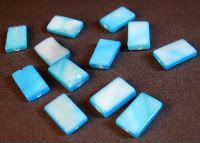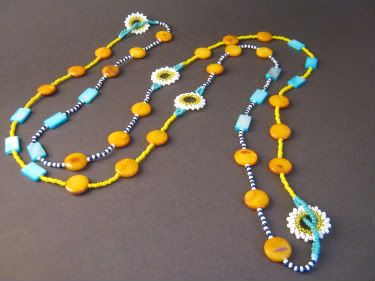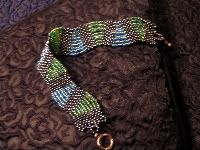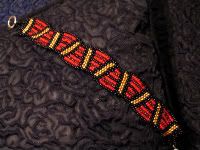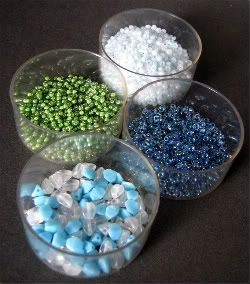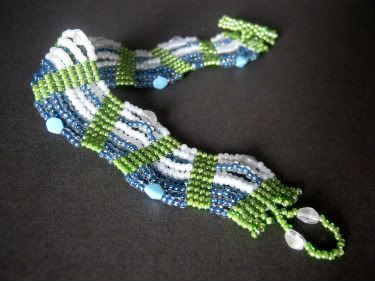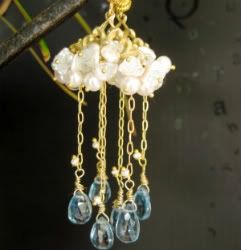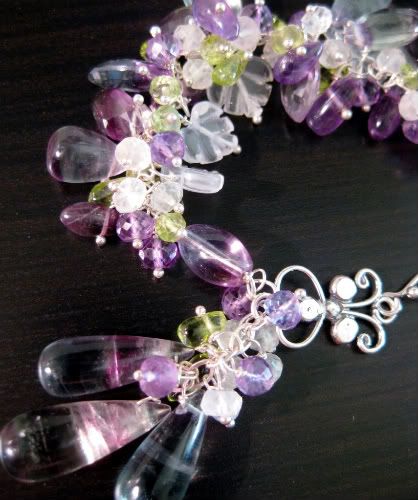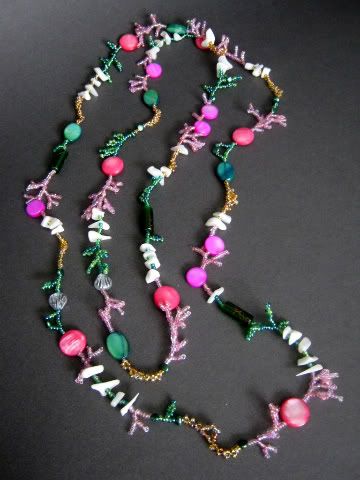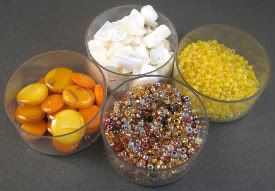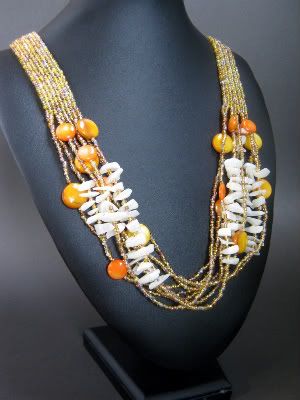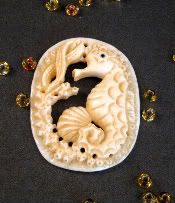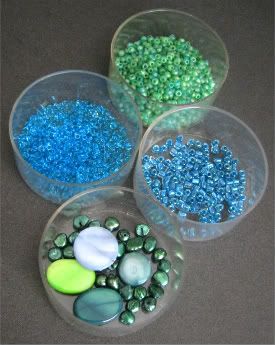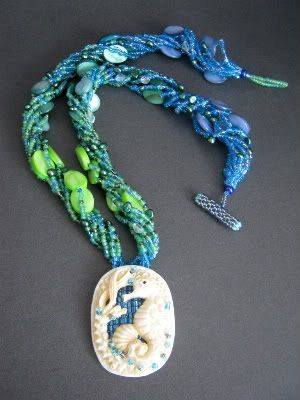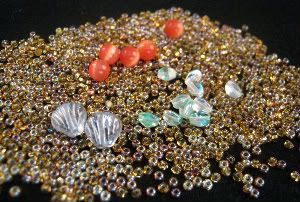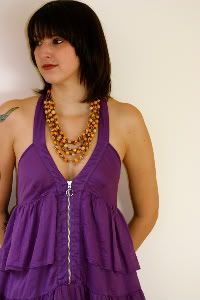
Sustainable, natural materials have become more popular with beaders and jewelry designers in recent years. Many of us are familiar with the Tagua Nut beads that are made from excess vegetable matter, instead of our more familiar man-made glass and plastic. Unlike shell, pearl or gemstones, these types of beads are collected with little or no impact on animals or the environment.
Thanks to the growing popularity of sustainable living, marvelous products like these are becoming more accessible to artisans and jewelry lovers alike. One company that is helping to inspire a love of natural jewelry is The Andean Collection.
Founded in September 2008, this small jewelry company is making waves in the fashion industry, by providing shoppers everywhere with gorgeous accessories made with natural materials - some of which are still rare in the US market.
The owner and founder of The Andean Collection, Amanda Judge, has brought new fashion ideas to cities like Boston, San Francisco, Los Angeles, Seattle, and New York, while bringing hope and fair pay to the jewelry artists of South America.
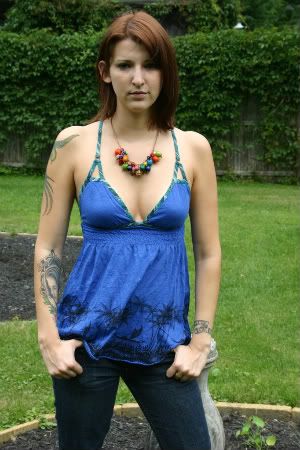
Inspirational Beading: What was your first reaction to seeing the beautiful natural bead designs of South America?
Amanda Judge: I was simply stunned. I couldn’t believe that these beads were actually natural materials. When The Andean Collection was just the sliver of an idea, I would spend days wandering through the markets of Ecuador asking all sorts of questions so that I made sure that I was learning all I could about the beads. I asked for introductions to the people who
dye and process the seeds and visited a lot of home workshops to observe the process myself.
Now that I know how the process works and how each seed is handled individually, it makes these pieces all the more interesting in my mind.
Inspirational Beading: There’s always something marvelous and special about hand-dyed beads, and the Andean Collection is full of lush shades. Which color is your favorite?
Amanda: Definitely turquoise. When the tagua is dyed turquoise, for example in our Riverbed bracelet, it actually looks like large chunks of turquoise stone. It’s so cool.
Inspirational Beading: How has working with fair trade affected the way you view jewelry, and the world as a whole?
Amanda: I could probably write a book on the answer to this question, but I’ll try to keep it shorter here. It’s not so much working in ‘fair trade’ that has changed my world, but working with the artisans themselves that has impacted my life the most. I talk with
the artisans daily or weekly (via email – I’ve taught them how to use email; and cell phones) and in this manner I get to be a part of their day-to-day lives. If they have a problem, like it’s really cold and rainy in Ecuador and they haven’t been able to sleep well, I know about it. If the price of grain has shot up and they’re having difficulty buying enough to feed their families, I know about it. And then I go out and figure out how to increase sales quickly so we can give them more work.
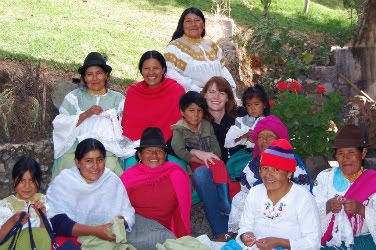
This makes me continually grateful for what I have in life. It’s all too easy to get caught up in your own world and take for granted all the niceties you have. Starting a business is extremely difficult and I have definitely had my own moments of maximum stress. During these more taxing times I tend to feel disconnected from Ecuador & the artisans as I get caught up in the operations in the states. Once this starts to happen, I book a flight to Ecuador or make some phone calls to check in with the artisans to see how they’re doing. This reminds me of what I’m working for and gives me the extra push I need to make sure things are successful. My relationship with the artisans just puts my own life into perspective. And a good perspective is amazingly key to a happy life.
As far as how working in fair trade has made me view jewelry…I am delighted that big beaded necklaces are all the rave now, but I see so many of them make out of synthetic beads and think, what a shame! The same designs could be made out of natural materials and would be so much more interesting.

Inspirational Beading: The Andean Collection features some very
unique materials, many of which are new to North American fashion. Which of the natural materials do you enjoy the most?
Amanda: My favorite bead is the Pambil seed. From far away it might look like a plastic synthetic bead, but then you notice all the natural irregularities in the bead that make it really dynamic. Tagua is also great as you can do almost anything with it! They call it vegetable ivory because it can be carved and molded into anything smaller than the size of the seed itself, which is about the size of an oversized golf ball.
Inspirational Beading: Who do you hope will be inspired by The Andean Collection?
Amanda: By focusing on high design, I hope we inspire other fair trade companies to market themselves more to the mainstream so that the movement of fair trade can compete on a larger scale. I also hope that we inspire consumers to ask more questions about what they are buying. If an organization says they are fair trade, ask for photos and videos of the artisans and their testimonials. And ask for evidence that an organization has done the due diligence of examining their entire supply chain. Ensuring that products are fair trade takes a lot of oversight on the part of the organization, and as companies grow that gets increasingly difficult. If anyone is thinking about starting a fair trade organization, make sure not to grow too fast so that that oversight gets lost!
I also hope people realize that you don’t need to pay a premium for fair trade, eco-friendly jewelry, nor do you have to sacrifice style to wear ethical jewelry. But most importantly, I hope The Andean Collection inspires people to go out into the world and do meaningful, exciting & life changing work – in whatever way you can.
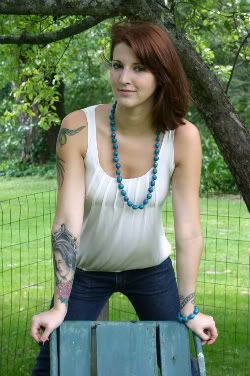
Copyright 2009 Inspirational Beading - The Andean Collection
